Ornamental Sweet Potato - Check How to Grow Sweet Potato Vine
Sweet potato vine is a plant usually grown as an annual, but it can be easily overwintered. It's a fast-growing climber, grown not only right above the ground, but also as a hanging decoration. A lot depends on the cultivar of this plant. Sweet potato leaves are considered a medicinal ingredient in many parts of the world. Check which variety of sweet potato vine is perfect for your garden.
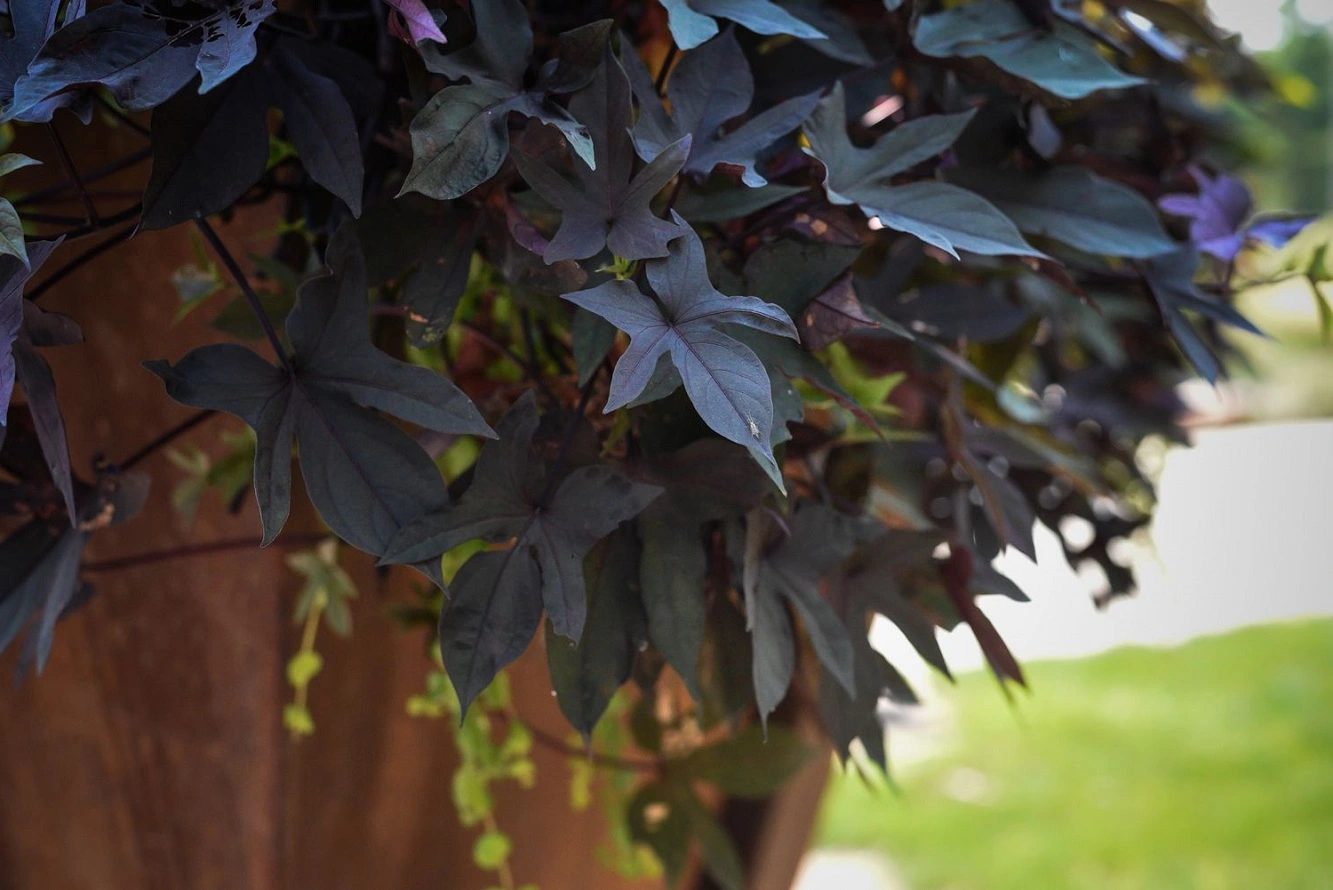
Sweet potato vine – a short description
Sweet potato vine is also known as Ipomoea batatas. It’s a creeping perennial originating in North and South America. Because of its popularity, the plant is currently cultivated everywhere in the world. Sweet potato vine can reach the length of 2 meters. Some varieties are even longer, and grow up to 5 meters long. The plant’s branches are quite thick and flexible. They get covered with leaves shaped like triangles or hearts.
Depending on the species, the leaves can be green, but also:
- yellow,
- brown,
- purple.
The plant begins blooming at the beginning of summer. Small, funnel- or bell-shaped flowers appear in the corners of the leaves. Their color is white with a distinct purple inside. Depending on the variety, the plant develops tubers in different colors. Some are edible, others might taste bitter and unpleasant.
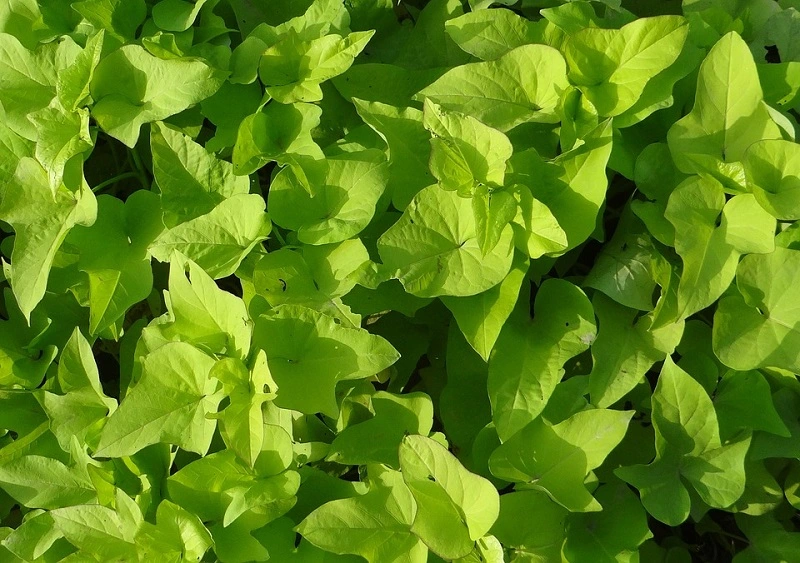
How to grow sweet potato vine
If you decided to grow sweet potato vine in your yard, make sure to pick a sunny location for it. The plant likes warm places. The soil should be fertile, with moderate permeability and humus content. Note that the ground for sweet potatoes should always be fairly wet. You can achieve the best parameters with a neutral or slightly acidic pH.
Sweet potato vine can withstand hot days, but it doesn’t like droughts. A too dry soil during hot days might cause an immediate reaction – wilting and drying of the leaves.
Sweet potato vine – commonly picked varieties
There are several popular varieties of ornamental sweet potato. Here are the most popular ones:
- Light Green – it has triangular, green leaves; its branches grow up to 70 cm long,
- Bronze – the leaves have three lobes and are brown,
- Purple – a variety of dark purple sweet potato vine; the leaves have noticeable nerves,
- Pink Frost – this sweet potato vine has leaves without lobes, but their surface is bumped and green, and the edges have white and pink streaks.
Most varieties are edible. Some produce delicious tubers – sweet potatoes. The only issue lies not in a particular cultivar, but in the provided growing conditions. Warmth and sunlight are essential when growing a tasty, edible tuber. If you live in a cold zone, you can try to achieve this goal by transforming your vegetable garden into a small greenhouse.
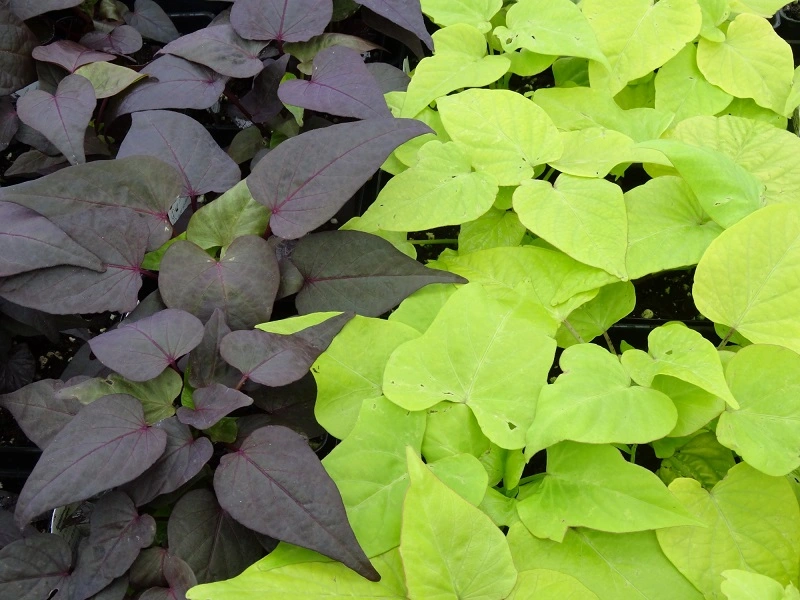
Sweet potato vine – plant care
When growing ornamental sweet potato vines, it’s essential to water the plants – especially during the first stage of their development. When your potato vine develops tuberous roots, it means it can accumulate water, and is more likely to survive hot days. In practice, you have to water the plants every day, and when they develop tubers, you can limit watering to once per week.
The soil should be moist all the time, but only slightly. Both excess and insufficient amounts of water are dangerous to the plant.
Sweet potato vine grows quite fast and, therefore, it needs a lot of nutrients. Before planting it in a particular spot, make sure to enrich the soil using a slow-release fertilizer. During the vegetation period, dilute fertilizer designed for balcony plants and water the plant with it every 2-3 weeks.
Sweet potato vine – propagation
Sweet potato vine can be propagated using its tubers. Divide a large tuber into 3-4 pieces, depending on its size. Make sure each element contains at least one bud. Secure the cuts with activated charcoal. Place each part of the bulb in fertile soil and water it regularly until the plant takes root. Spring is the best time for propagating sweet potato vine plants using the division method.
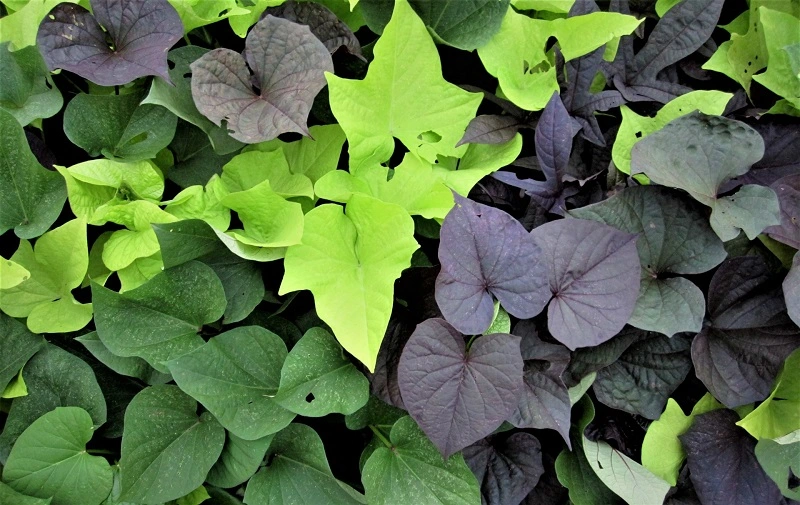
Sweet potato vine – benefits
Sweet potato vine is a popular plant used in folk medicine. A brew from its leaves is a sweat-inducing, antibacterial, antifungal, laxative, and tonifying remedy. Sweet potato vine were also used as a treatment for colds, digestive issues and even asthma. The leaves contain a lot of polyphenols, which have antimutagenic and anticancerous properties.
Sweet potato vine – is overwintering necessary?
Sweet potato vine is a warmth-loving plant, which doesn’t like low temperatures. If left in the garden for a cold-zone winter, it will die even if secured. You can dig out the tubers and store them in a container filled with sand. Place the container in a dark room at about 4°C (39.2°F). This way, the plant can survive winter, and you can plant it again in the yard after the last freezes.
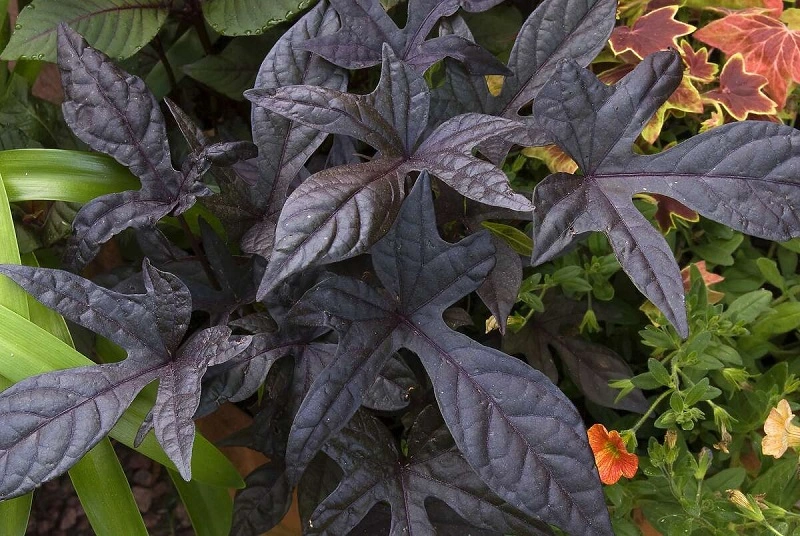
Where to buy a sweet potato vine?
Sweet potato vine is a highly popular plant, thanks to which it can be purchased in most garden shops. Unique varieties of a particular color or leaf shape can be bought online as seedlings. The price depends on the variety and development stage of the plant.
Sweet potato vine – pests
Sweet potato vine is resistant to various diseases and pests. But make sure to take a good care of the plant. Overly dry ground might cause drying of the leaves, and excess water might lead to fungal diseases such as botrytis. Most issues can be resolved by correcting the way you care for the plant.
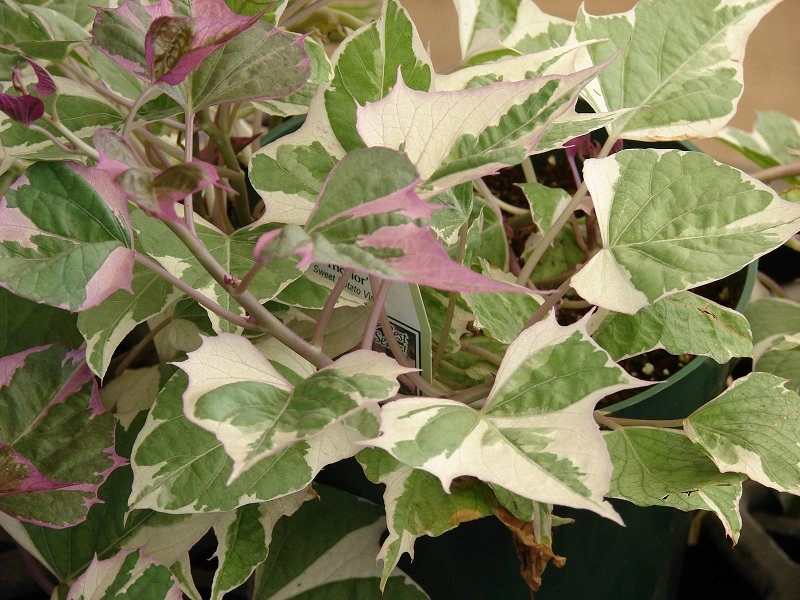
📍 Sweet potato vine – what kind of plant is it?
Sweet potato vine is a tuber plant. Its habit is usually flat, but the leaves are sometimes raised. The stems are fleshy and develop a lot of branches. They can grow up to 5 meters long.
📍 When to plant sweet potato vine?
Ornamental sweet potato can be planted directly in the ground. Schedule it for the second part of May, when the weather is warm enough. You can purchase sweet potato vine seedlings in a garden center.
📍 Where to buy a sweet potato vine plant?
The plant is quite popular, thanks to which it's popular in most garden centers. Because it's easy to grow, its seeds are commonly available. You can also purchase seedlings, which are ready to be planted in the ground.
Featured articles




